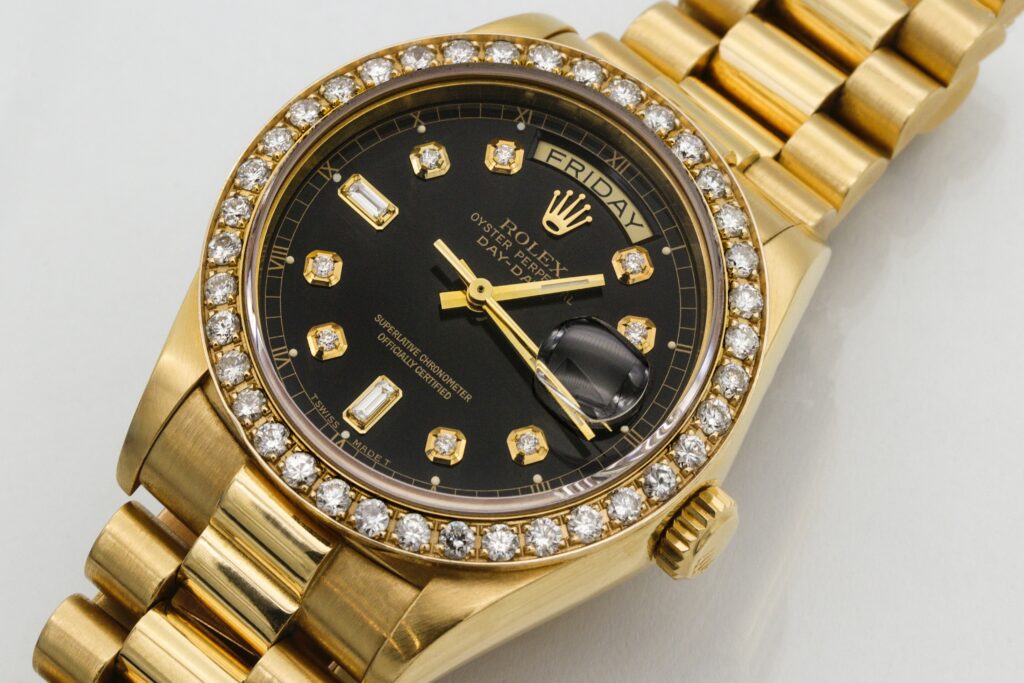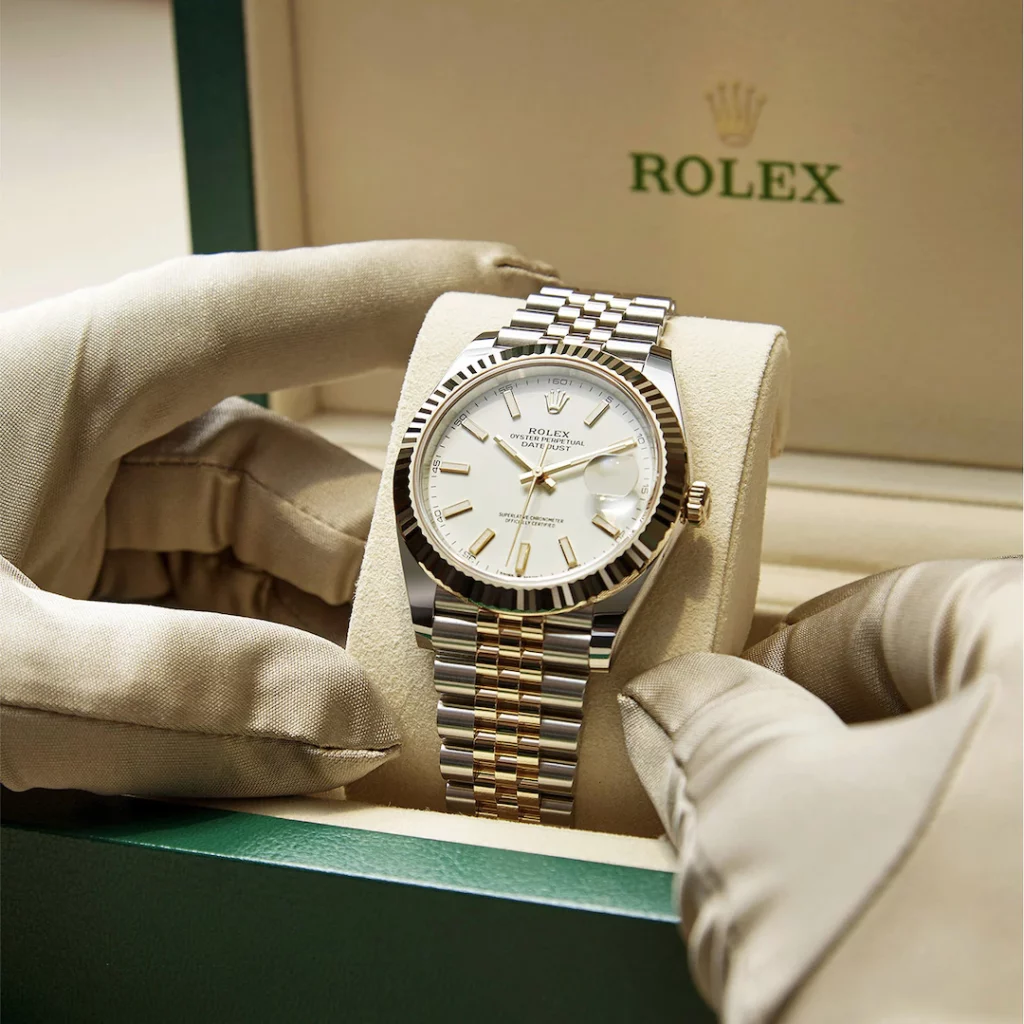Fr., Feb. 3rd 2023

While there may be more expensive watches in the world, none are as recognizable as Rolex.
While the pandemic and its myriad of supply chain issues created a boom time for luxury Swiss watchmakers and secondhand sellers, the months following led to a price collapse that the industry never saw coming.
Land in any airport in Switzerland, bleary-eyed and stiff, and you won’t be able to ignore the numerous watch advertisements emblazoned across almost every inch of available space – the most notable being Rolex. In a country obsessed with horology (and with timekeeping, for that matter), Rolex’s flag flies the highest among Swiss luxury watchmakers. The brand is synonymous with class, quality, innovation, and of course, wealth. But like nearly every industry around the world, the Covid pandemic turned it upside-down.
The Swiss watch industry represents about 1.5% of the country’s GDP, making it Switzerland’s third largest export. Some figures claim that the pandemic reduced the luxury watch supply by a whopping 70%, and at a moment when bored consumers were stuck at home online shopping. Scarcity certainly created demand when it came to new and pre-owned Rolexes. The Federation of the Swiss Watch Industry reported the market reaching new heights in February 2022 (exports amounted to 24.8 billion CHF for the whole of 2022), but that trend slowly soured. As watchmakers made up for lost time and stocked their shelves by late 2022, they came to a price cliff.
Morgan Stanley reported that pre-owned Rolex prices dropped by 21% from spring to fall of 2022. Some watch bloggers reported that one could even waltz into a Rolex store and buy one new on the spot – something unheard of for years previously. To illustrate, a pre-owned Rolex Daytona 116500LN went for 43,440 CHF at its peak in 2021, but by fall 2022 could be bought for less than 30,000 CHF, according to Morgan Stanley.
“The reductions underscore the losses faced by dealers who purchased expensive watches during an unprecedented price surge in 2021 and early 2022,” according to Bloomberg. “The decline in second-hand prices for the top brands has been linked to rising inflation, slowing economic growth in the U.S. and Europe and the crash in cryptocurrencies. The bursting of the crypto bubble erased paper profits for some investors who had turned to luxury watches as a new speculative asset class.”
And yet, Rolex announced at the end of 2022 of its expansion plans for Switzerland: A 1 billion CHF new production facility at its site in Bulle, in canton Gruyère, creating 2,000 new jobs in the process. The facility is expected to open in 2029 and was likely approved during the Rolex shortage felt during the pandemic. Is this the moment for expansion? Can Rolex survive on tradition alone?

In stores, Rolexes are always handled with specially-made satin Rolex gloves (Credit: Rolex).
Rolex founder Hans Wilsdorf invented the world’s first waterproof wristwatch one hundred years ago – the ‘Oyster’, created in 1926 – with the movement, dial, and other components all kept in a hermetically sealed case. When Wildorf gave Mercedes Gleitze an ‘Oyster’ to wear in her 1927 swim across the English Channel, she wore it around her neck. She was pulled from the freezing water barely conscious hours later, while the watch, on the other hand, was dry and in perfect working condition.
A history of major world events can also be examined through the lens of a Rolex watch: in 1943, in a German prisoner of war camp, Corporal Clive James Nutting, one of the orchestrators of the Great Escape, ordered a Rolex ‘Oyster’ from Geneva. The watch is believed to have been ordered by Nutting to be used in the escape, as it allowed him and his fellow prisoners to time the patrols of the prison guards. In 1953, when earning the accolade of the first person to climb Mount Everest, Sir Edmund Hillary was wearing the Rolex ‘Explorer’ on his wrist. And in 1960, when the Trieste, a diving vessel designed by Swiss engineer Jacques Piccard, descended into the Marianna Trench, otherwise known as the deepest waters on the planet, a specially-made Rolex also made the journey down, strapped to the exterior of the diving vessel. It was found to be in perfect working condition when the Trieste resurfaced.
Despite the notoriety, the company is extremely tight-lipped. Rolex rarely makes public statements and is infamous for being the least communicative of the Swiss watch brands. It is also ‘private’ in the sense that it is privately owned, meaning that it is not answerable to shareholders and can keep its annual sales and profits from prying eyes, although Morgan Stanley’s annual report on the watch industry has estimated that Rolex made sales of an estimated 8.05 billion Swiss francs in 2021.
Characteristically, Rolex has neither denied nor confirmed these estimates. There is also considerable privacy about the charitable trust behind the company: Rolex is owned by the Hans Wilsdorf Foundation, set up by Rolex’s founder. In 1960, Wilsdorf gave his 100% ownership stake in Rolex to the foundation, which is recognized by the Swiss government as a charitable trust. This offers quite a beneficial fiscal situation for Rolex.
It is possible that the past few months will in a year’s time be seen as simply a bump in the road for Rolex as they move forward with their expansion. While many were wary of the launch of the Apple Watch in 2015 as apocalyptic for traditional wristwatches, the smartwatch wave actually reinvigorated interest in all watches.
As always, stay tuned.
Dieser Artikel darf frei weitergegeben und nachgedruckt werden, vorausgesetzt, es wird auf den Originalartikel verwiesen.
